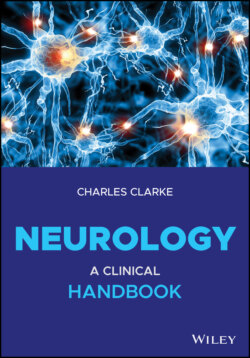Читать книгу Neurology - Charles H. Clarke - Страница 179
Brainstem Syndromes
ОглавлениеAnatomy is outlined in Chapter 2. Figure 4.9 is a helpful diagram, repeated here in a clinical context: think of the level within the brainstem and of the dorso‐ventral plane. The usual hallmark is coexistence of damage to motor and/or sensory fibres and to cranial nerve nuclei. Syndromes involving oculomotor nerves III, IV and VI indicate upper or mid brainstem disease. Mid and lower brainstem disease affects nuclei VII–XII.
Bulbar and pseudobulbar palsy describe common brainstem syndromes (Chapter 13). Both cause dysarthria, dysphagia, drooling and respiratory problems. Bulbar palsy means disease of the lower cranial nerves (IX, X, XII), their nuclei and muscles. Pseudobulbar palsy is shorthand for UMN lesions of lower cranial nerve nuclei. MS, brainstem stroke and MND cause pseudobulbar palsy, the latter usually both pseudobulbar and bulbar. Advanced Parkinson’s causes poverty of movement of these muscles.
Figure 4.9 Brainstem: lateral schematic view.
Source: Hopkins (1993).
